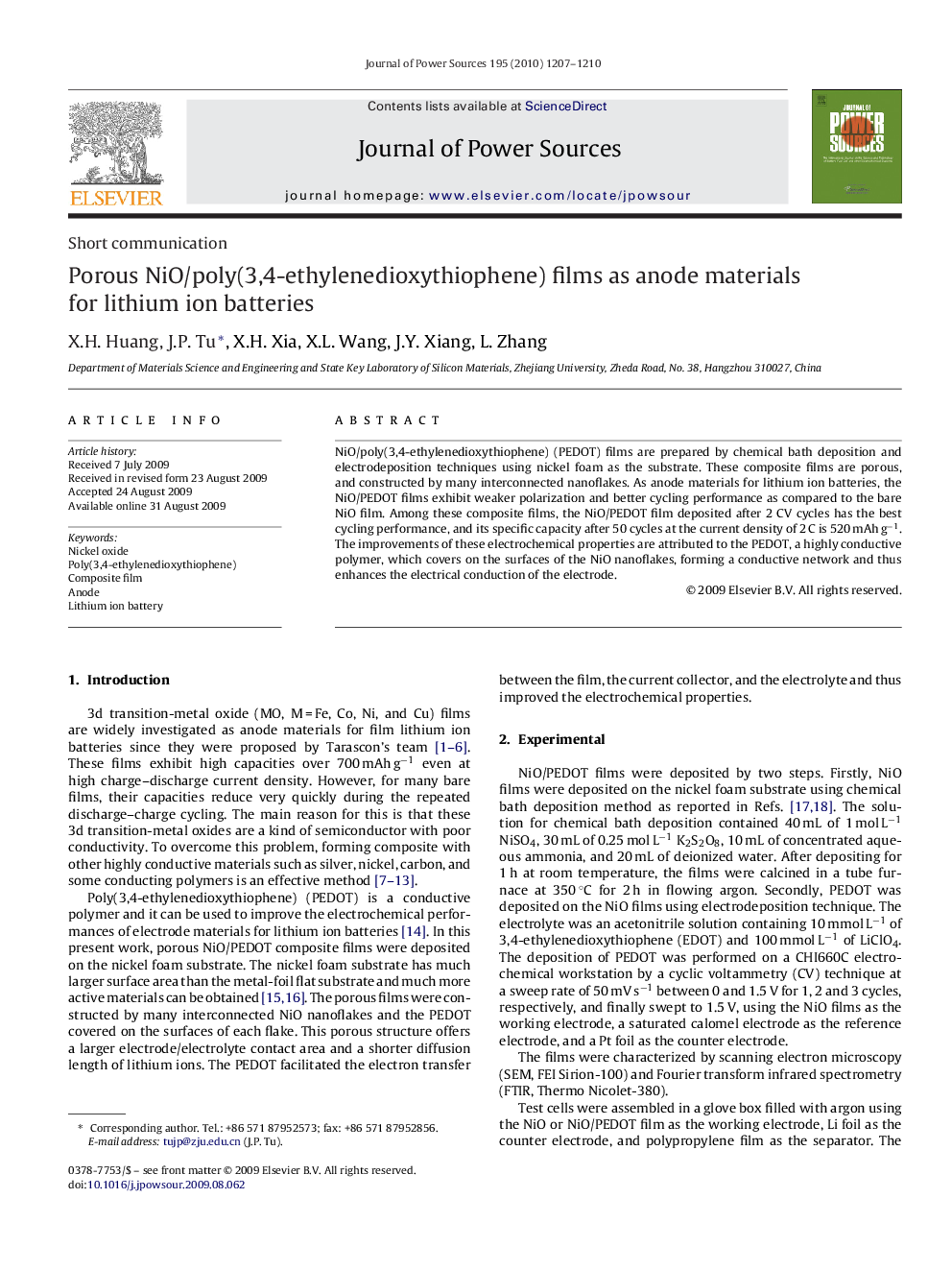| Article ID | Journal | Published Year | Pages | File Type |
|---|---|---|---|---|
| 1285122 | Journal of Power Sources | 2010 | 4 Pages |
NiO/poly(3,4-ethylenedioxythiophene) (PEDOT) films are prepared by chemical bath deposition and electrodeposition techniques using nickel foam as the substrate. These composite films are porous, and constructed by many interconnected nanoflakes. As anode materials for lithium ion batteries, the NiO/PEDOT films exhibit weaker polarization and better cycling performance as compared to the bare NiO film. Among these composite films, the NiO/PEDOT film deposited after 2 CV cycles has the best cycling performance, and its specific capacity after 50 cycles at the current density of 2 C is 520 mAh g−1. The improvements of these electrochemical properties are attributed to the PEDOT, a highly conductive polymer, which covers on the surfaces of the NiO nanoflakes, forming a conductive network and thus enhances the electrical conduction of the electrode.
